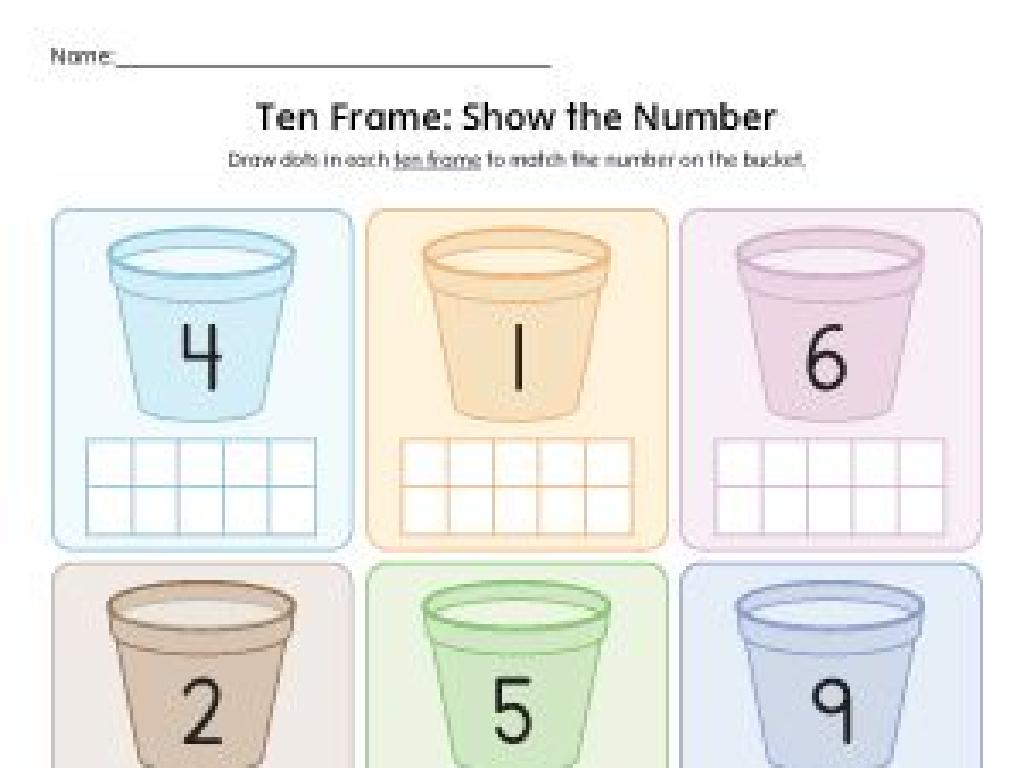Roman Numerals I, V, X, L, C, D, M
Subject: Math
Grade: Fifth grade
Topic: Whole Numbers And Place Value
Please LOG IN to download the presentation. Access is available to registered users only.
View More Content
Introduction to Roman Numerals
– Basics of Roman numerals
– I, V, X, L, C, D, M represent 1, 5, 10, 50, 100, 500, 1000
– Roman numerals in daily life
– Seen on clocks, books, and monuments
– Historical significance
– Used in ancient Rome for trade and record-keeping
– Roman numerals today
– Still used for movie series, outlines, and more
|
This slide introduces students to Roman numerals, starting with the basic symbols and their values. Emphasize that these numerals are not just historical artifacts but are still used in many aspects of contemporary life, such as on clock faces, in book chapter headings, and to denote important events or series. Highlight the role Roman numerals played in the development of commerce and administration in ancient Rome and how they continue to be a part of our cultural heritage. Encourage students to find examples of Roman numerals around them and bring these examples to class for discussion.
Understanding Roman Numerals
– Roman numeral symbols
– I, V, X, L, C, D, M represent 1, 5, 10, 50, 100, 500, 1000
– Writing numbers in Roman
– Combine symbols to form numbers
– Example: III equals 3
– III is 3 because I is added thrice
– Example: VIII equals 8
– VIII is 8; V for 5 and three I’s add 3
|
This slide introduces the basic symbols of Roman numerals and their values, which are essential for understanding how to write numbers using this ancient system. Emphasize that Roman numerals are not just random letters but have specific values and rules for combination. Show how to build numbers by adding the values of the symbols together, using III and VIII as clear examples. Encourage students to practice with other numbers and to notice patterns, such as how adding I’s increases the number. This foundational knowledge will help them as they learn to read and write more complex Roman numerals.
Rules of Roman Numerals
– No more than three identical symbols
– Smaller before larger means subtract
– E.g., IV: I before V, so 5 – 1 = 4
– Smaller after larger means add
– E.g., VI: I after V, so 5 + 1 = 6
– Examples: IV and VI
|
This slide introduces the basic rules for combining Roman numerals, which are essential for understanding and writing them correctly. Emphasize that unlike Arabic numerals, Roman numerals use a combination of letters to represent values. The rules help maintain clarity and avoid confusion. For instance, the numeral ‘I’ can only appear up to three times in a row (e.g., III for 3), to prevent four ‘I’s from being confused with ‘IV’, which means 4. When a smaller numeral is placed before a larger one, it indicates subtraction (e.g., IV means 4). Conversely, when a smaller numeral follows a larger one, it indicates addition (e.g., VI means 6). Provide additional examples like IX for 9 (subtraction) and XI for 11 (addition) to reinforce the concept. Encourage students to practice these rules by creating their own examples and checking each other’s work for accuracy.
Comparing Roman and Arabic Numerals
– Differences between numeral systems
– Roman numerals use letters; Arabic use digits
– Examples from 1 to 100
– Roman: I, II, III, …; Arabic: 1, 2, 3, …
– Place value in Roman numerals
– No ‘0’; relies on position and combination
– Place value in Arabic numerals
– Uses ‘0’ and place value to determine number
|
This slide aims to help students understand the fundamental differences between Roman and Arabic numerals, which are commonly used today. Emphasize that Roman numerals are composed of letters from the Latin alphabet and do not include a zero, while Arabic numerals are the digits 0-9 that we use every day. Provide clear examples of both systems, especially focusing on numbers 1 through 100, as this will cover all the Roman numerals I, V, X, L, and C. Discuss how place value works in both systems, highlighting that Roman numerals depend on the position and combination of letters to convey value, whereas Arabic numerals use the concept of place value with the digit zero playing a crucial role. Encourage students to practice converting between the two systems and to understand the historical context and modern usage of Roman numerals.
Practical Uses of Roman Numerals
– Spot Roman numerals in daily life
– Look for them on clocks, books, and buildings
– Understand relevance of Roman numerals
– They connect us to history and are still in use today
– Roman numerals in modern usage
– Common in movie release years, chapters in books, and more
– Activity: Hunt for Roman numerals
|
This slide aims to show students that Roman numerals are not just ancient history; they’re a part of our everyday lives. Start by explaining where they might encounter Roman numerals, such as on the face of a clock, the spine of a book, or the cornerstone of an old building. Discuss the historical importance and why they remain relevant today, being used in various modern contexts like movie sequels or sporting events (e.g., Super Bowl). For the activity, encourage students to find Roman numerals around them, perhaps in their homes or neighborhood, and bring examples to class. This will help them recognize and understand the practical application of Roman numerals in the real world. Provide guidance on how to document their findings and be ready to share.
Let’s Practice Roman Numerals!
– Convert Arabic to Roman numerals
– Example: 42 is XLII in Roman numerals
– Solve problems with Roman numerals
– Example: What is X + XV?
– Group activity: Number line creation
– Use a long paper to draw a number line and mark Arabic and Roman numerals
|
This slide is designed for a hands-on learning experience with Roman numerals. Start by demonstrating how to convert Arabic numerals into Roman numerals, using a step-by-step approach. Then, move on to solving mathematical problems that involve adding or subtracting Roman numerals, ensuring to explain the process clearly. For the group activity, provide students with long strips of paper and ask them to create a number line that includes both Arabic and Roman numerals. This will help them visualize the relationship between the two systems. Offer guidance on the correct placement of numerals and encourage collaboration among students. Prepare to assist with conversions and ensure that each group has a reference chart for Roman numerals.
Class Activity: Roman Numeral Bingo
– Receive your Roman Numeral Bingo card
– Listen for the Arabic numerals called out
– Find and mark the matching Roman numeral
– Shout ‘Bingo!’ when you complete a row
|
This interactive activity is designed to help students practice converting Arabic numerals to Roman numerals in a fun and engaging way. Each student will receive a Bingo card filled with Roman numerals. As the teacher calls out numbers in Arabic form (e.g., 4, 9, 15), students will need to quickly convert them to Roman numerals (e.g., IV, IX, XV) and mark them on their cards. The first student to mark a complete row (horizontal, vertical, or diagonal) and shout ‘Bingo!’ will win a small prize. This game not only reinforces their understanding of Roman numerals but also encourages attentiveness and quick thinking. Prepare several rounds of the game with different Bingo cards to ensure all students have a chance to participate and win.





